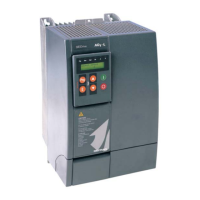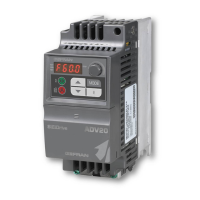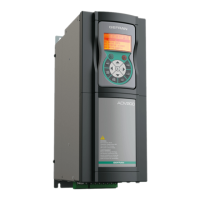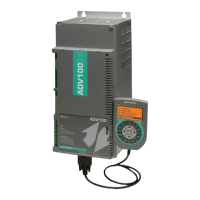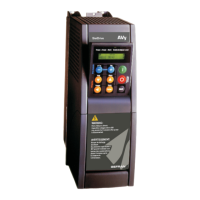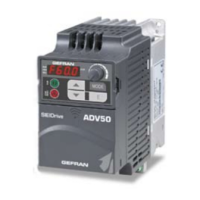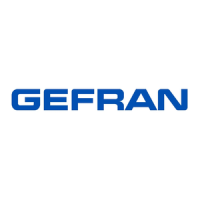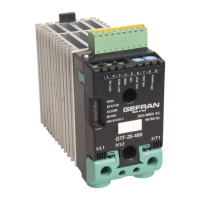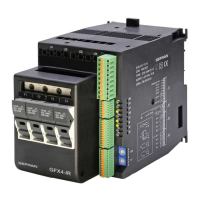AGL50-EV 23
6 - Commissioning suggestions
Before changing the parameter settings make sure that the starting values are default values.
Change the parameters one at the time; if the change on any parameter is not effective, restore the parame-
ter initial value before changing another one.
• In order to avoid problems linked to running comfort, it is advisable to perform a preliminary control of the motor
parameters.
Check in the STARTUP menu that the value set in the following parameters corresponds to the motor nameplate
data:
S.100 Base voltage Inverter maximum output voltage (Vrms).
S.101 Base frequency Motor base frequency (Hz).
S.150 Motor rated curr Motor rated current (Arms).
S.151 Motor pole pairs Number of motor polepairs.
S.152 Motor power fact (cos phi) Motor input power factor with rated current and voltage.
• In order to avoid too high settings of the acceleration and deceleration values (jerk), make sure that the slowing-down
distances correspond to those listed in the table:
Suggested slowing-down distances
Plant rated speed (m/s) 0,6 0,8 1,0
Suggested slowing-down distance (mm) 800 1000 1300
Such distances grant a high running comfort with the factory set jerk values.
• The default speed levels can be selected on the terminal 18. It is advisable to use the frequencies as follows:
S.200 Frequency ref 0 Slow speed: it is the oor reaching speed (frequency)
S.201 Frequency ref 1 High speed: it is the rated speed (frequency) required by the motor for that
specic plant.
Other speeds (maintenance, rephasing procedure etc.) can be selected as per table 7.2.
• In the open loop plants (without encoder), the boost can be increased if the lift car tends to rotate in the opposite
direction during the starting phase or if it can not start in spite the running speed has been set (S.300 Manual boost,
default = 3). The boost should be gradually increased by 1% at the time. Too high values cause the intervention of
the current limit alarm.
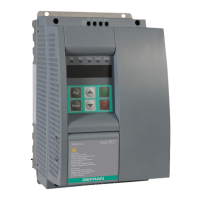
